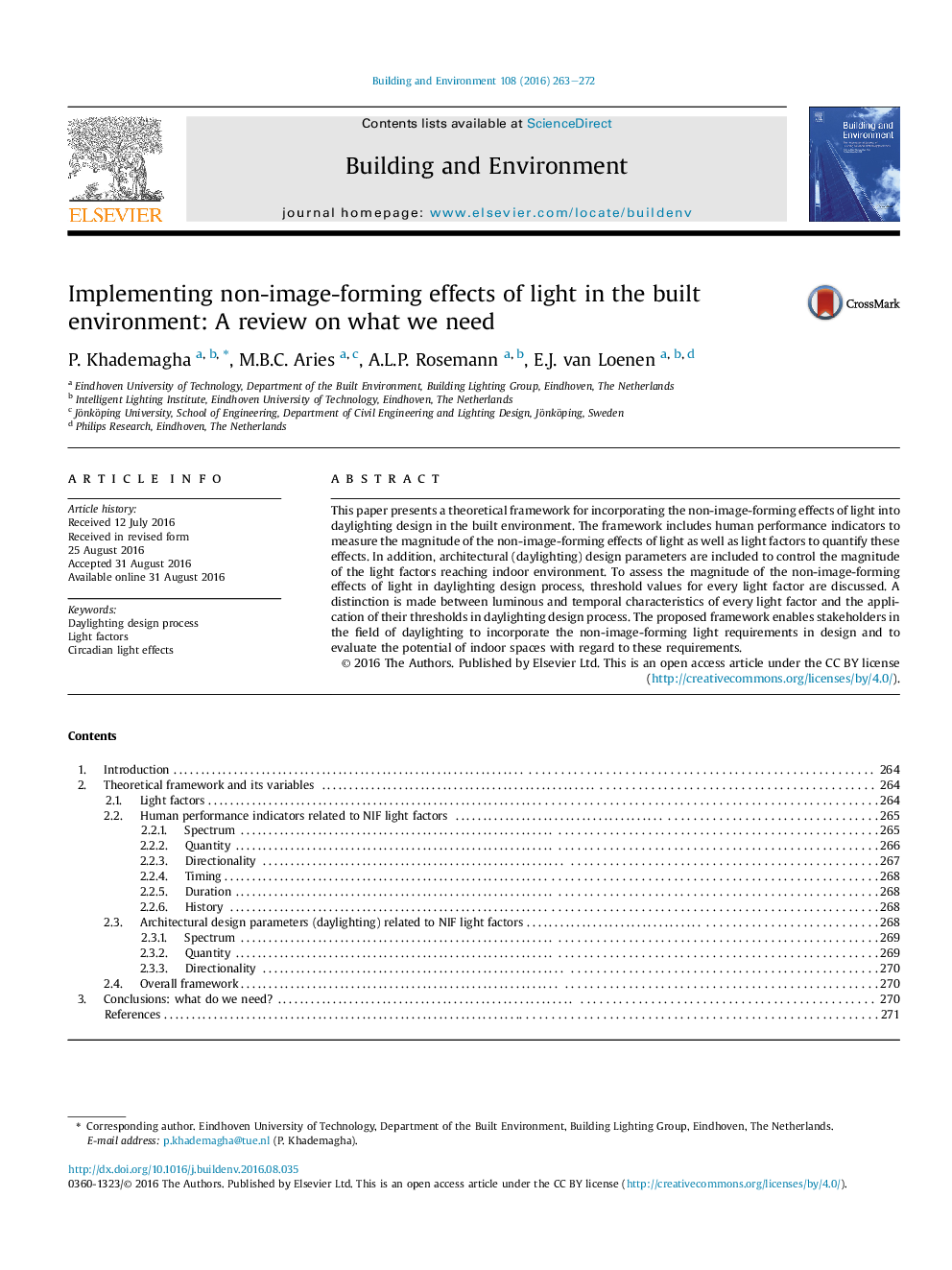| Article ID | Journal | Published Year | Pages | File Type |
|---|---|---|---|---|
| 6479283 | Building and Environment | 2016 | 10 Pages |
This paper presents a theoretical framework for incorporating the non-image-forming effects of light into daylighting design in the built environment. The framework includes human performance indicators to measure the magnitude of the non-image-forming effects of light as well as light factors to quantify these effects. In addition, architectural (daylighting) design parameters are included to control the magnitude of the light factors reaching indoor environment. To assess the magnitude of the non-image-forming effects of light in daylighting design process, threshold values for every light factor are discussed. A distinction is made between luminous and temporal characteristics of every light factor and the application of their thresholds in daylighting design process. The proposed framework enables stakeholders in the field of daylighting to incorporate the non-image-forming light requirements in design and to evaluate the potential of indoor spaces with regard to these requirements.
